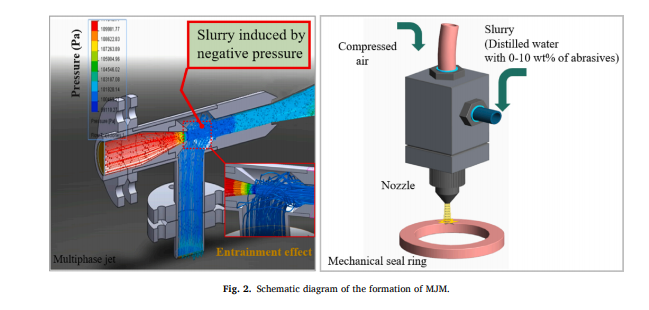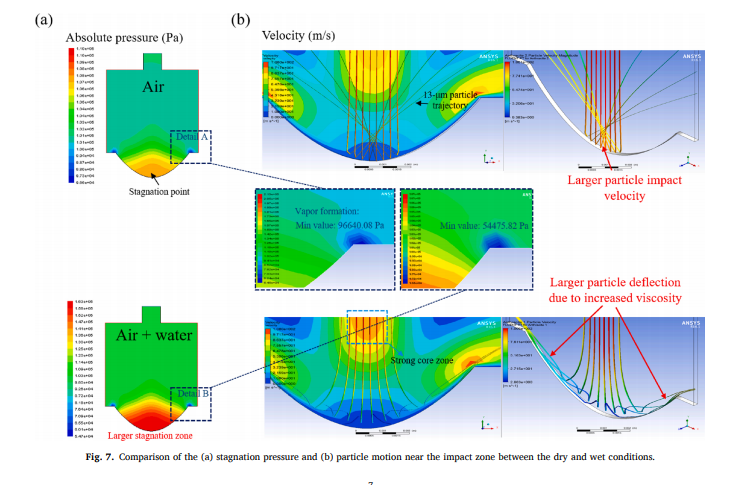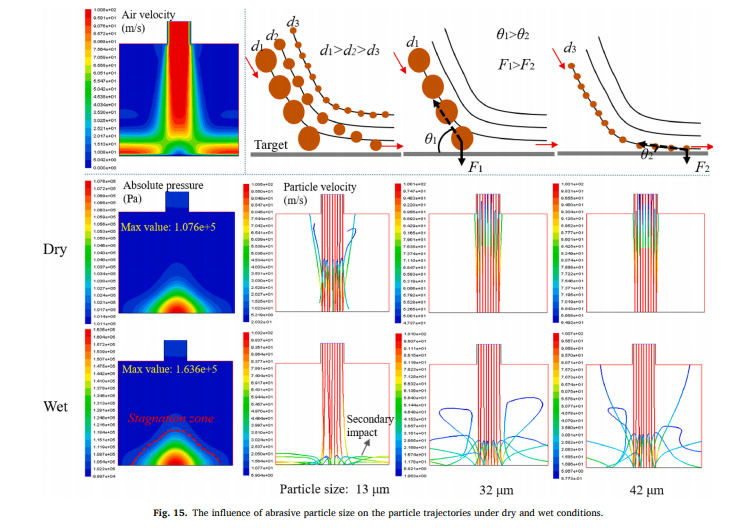Multiphase jet machining (MJM) is a recently developed surface texturing method that introduces water into a dry abrasive air jet. However, there are still some unknown issues with MJM, especially regarding the effects of adding water. Hence, we conducted a series of comparative studies when water was added (wet conditions) or not (dry conditions). Dimples and masked channels were machined on Si wafer and cemented carbide (YG6) surfaces to quantify the machining profile, erosion rate and roughness. Numerical simulations and high-speed cameras were used to help understand the particle erosion mechanisms. It was found that the inhaled water was completely atomized to form droplets and wrapped the abrasive particles; thus, the abrasives tended to follow their original trajectories without being deflected by the divergent airflow. This convergent effect could reduce the jet diameter and thus improve the machining resolution. The machining footprint was found to be reduced by 47.2 % at a jet distance of 13 mm compared to without water. Experimental and numerical results confirmed that under wet conditions, most of the particles would flow close to the machined surface, thus introducing a sliding grinding effect. The net result was a decrease in erosion ability but an improvement in surface roughness. Particularly, for the machining of sintered materials, the roughness could be improved more than 2.5 times.



